A new startup called Radia is planning to build the WindRunner, an aircraft dedicated to the transportation of enormous wind turbine blades.
What do the Hughes H-4 Hercules (aka the “Spruce Goose”), the Antonov An-225 “Mriya”, and the Scaled Composites Stratolaunch Model 351 “Roc” have in common? Other than being the three largest aircraft in the world (by wingspan), all three of them were conceived for a special purpose.
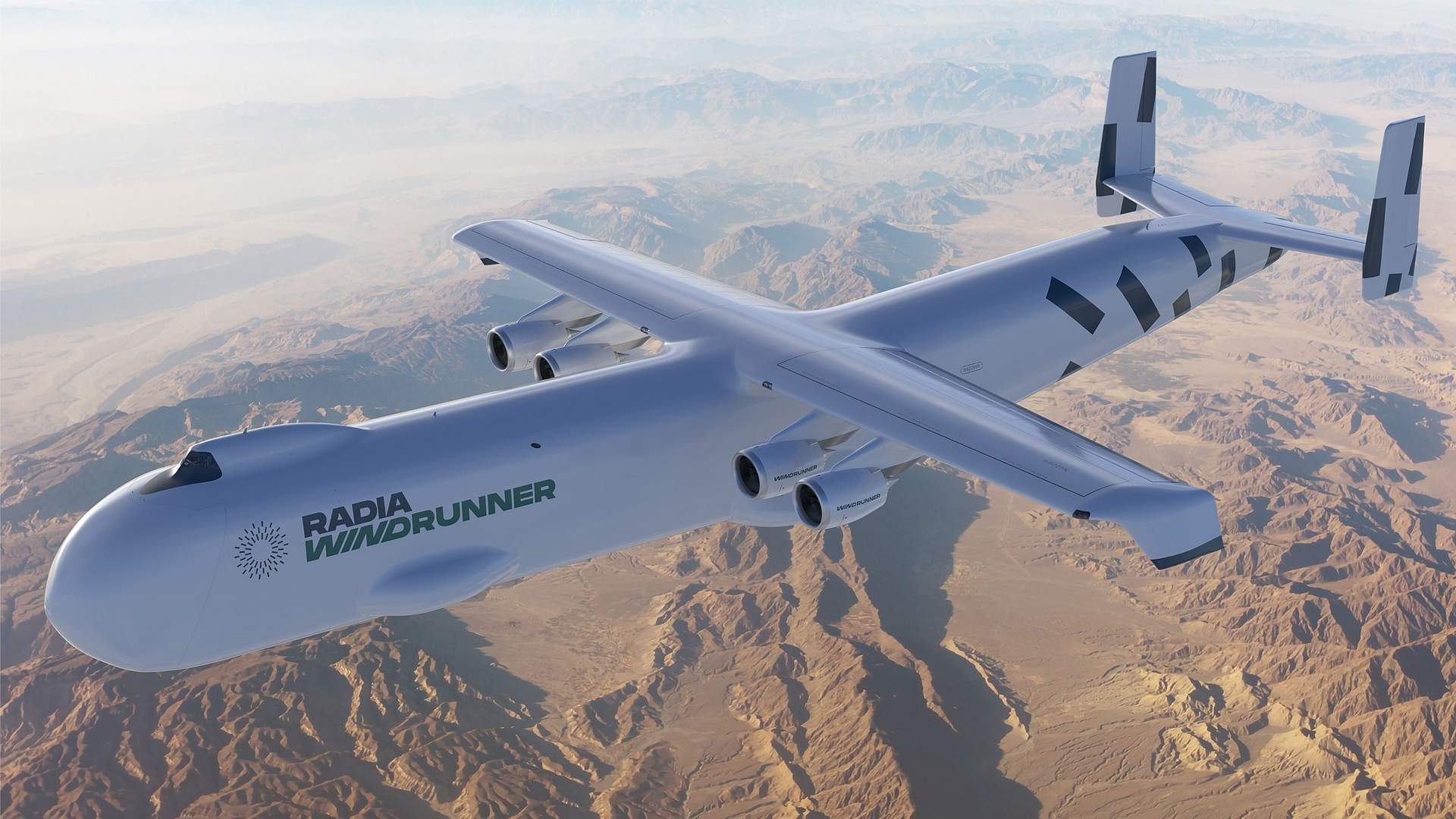
The Radia WindRunner won’t quite rival these giants with its wingspan, or in terms of payload (by weight). But it will completely outclass them in terms of the volume of cargo that it can carry. And like them, it has an unconventional role, that its creators believe makes it necessary.
Wind turbines get bigger and bigger over time because their efficiency increases with size. This means that their blades will continue to get bigger, as long as they can structurally stay in one piece. But that creates another problem.
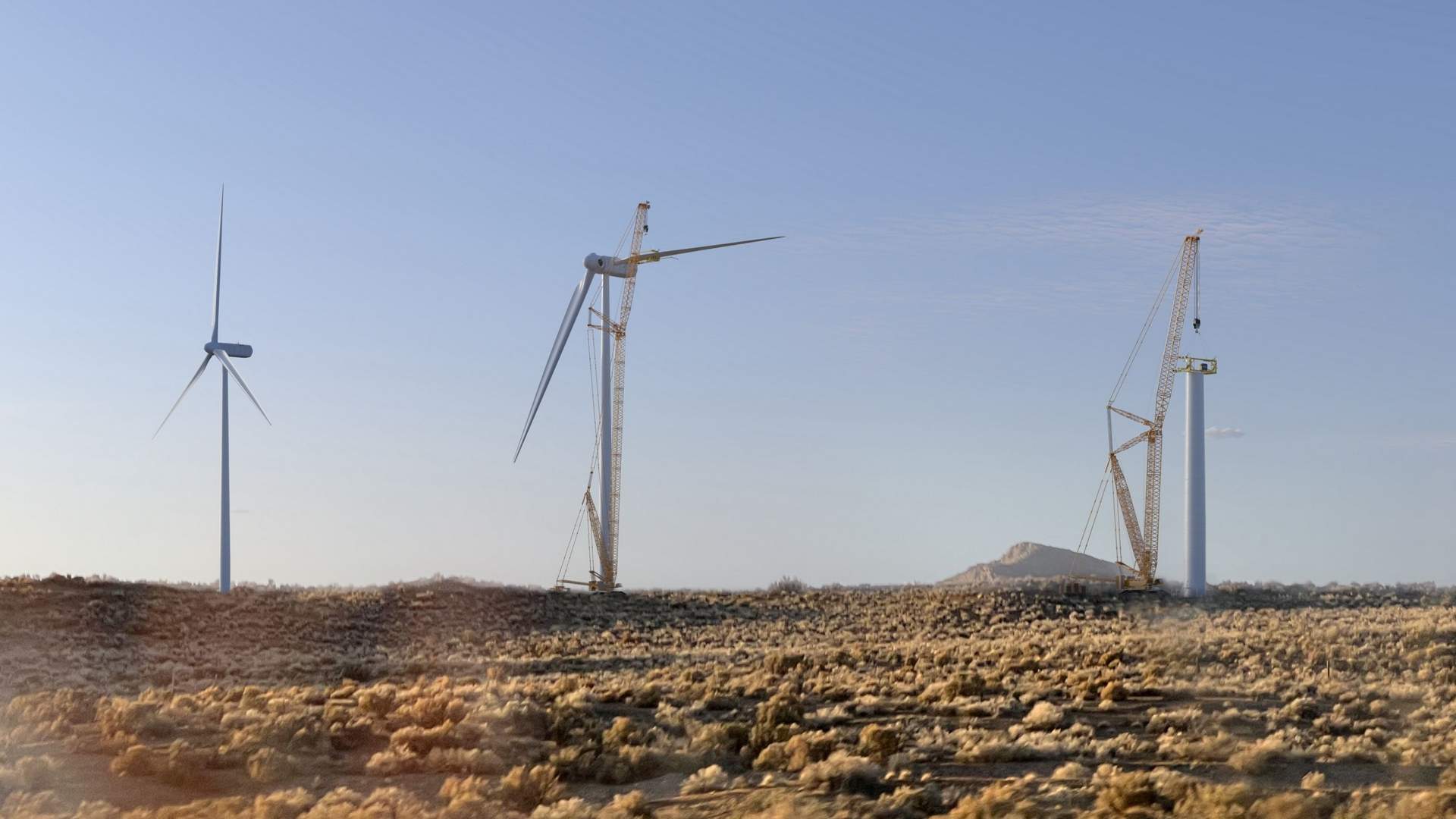
The facilities that produce these blades tend to be near large ports. Shipping these blades around the world isn’t a problem… IF their destination is also near (or on) water. You can probably guess where this is going.
A Very Specific Role
Today, the world’s longest wind turbine blades are over 115 meters (377 feet) long. But these blades are for an off-shore turbine (still in testing). Operating a turbine of this size on land would be practically impossible.
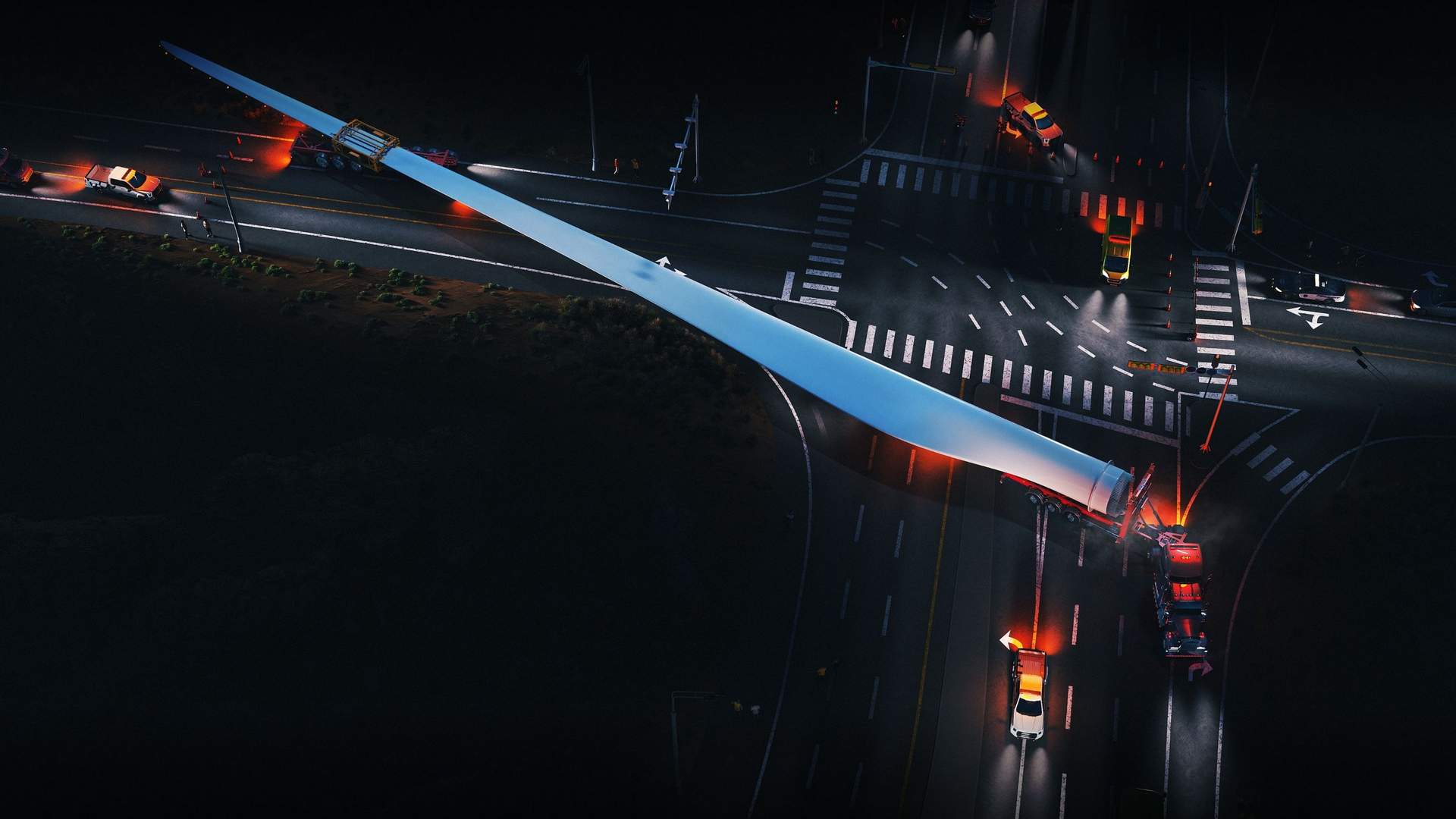
That is because physically moving such blades to their destination over land, just doesn’t work with existing road infrastructure. Such blades don’t fit under bridges. Large helicopters could sling smaller blades, but not these behemoths.
That’s where the Radia WindRunner, a different kind of behemoth, comes in. Radia is designing the Windrunner so that it can carry blades that are 105 meters (344 feet) long. The aircraft could pick up the blades from their production site and fly them… anywhere.
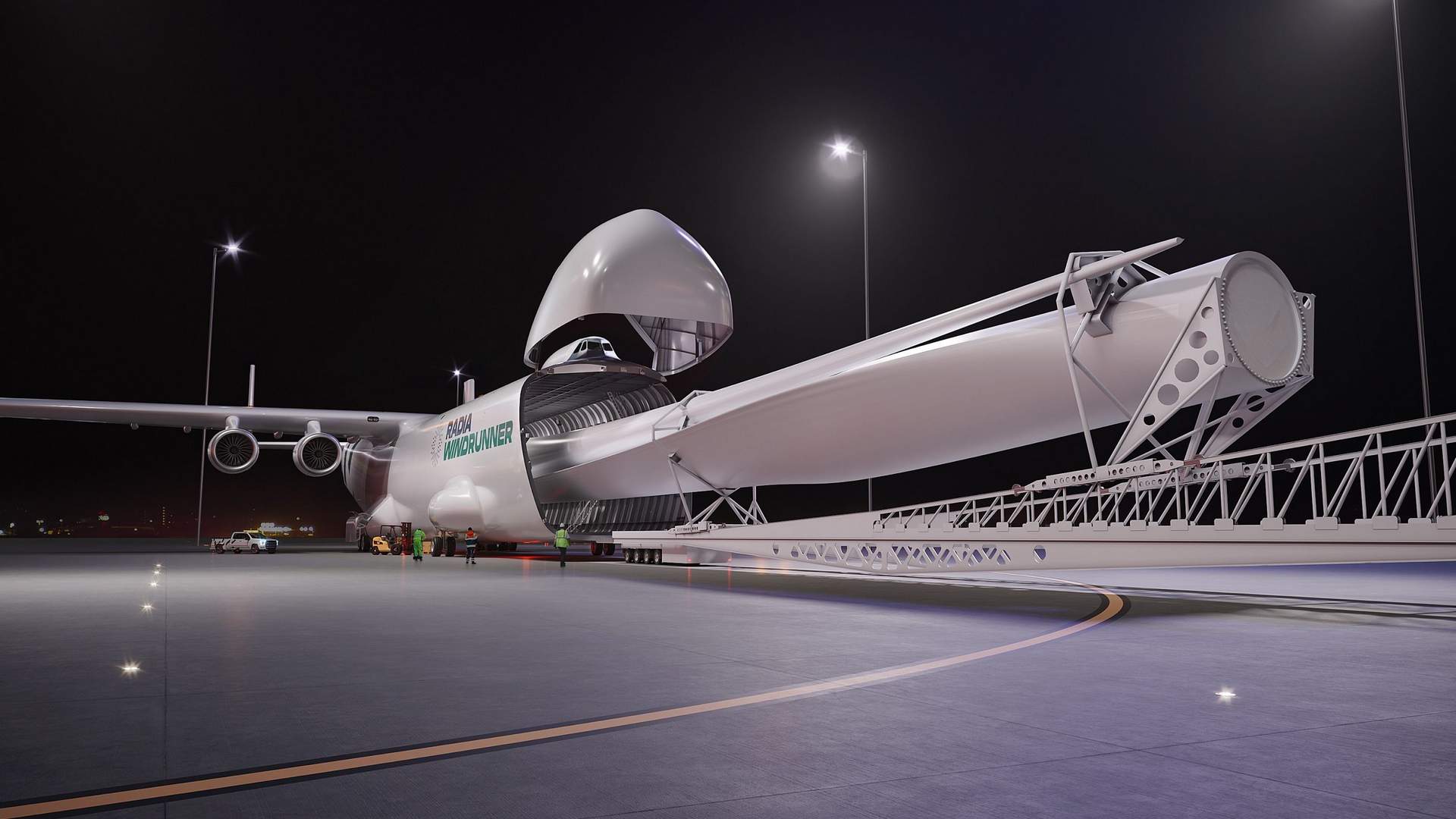
Radia is also designing the WindRunner so that it can land on short (1,830 meters or 6,000 feet) runways. Its landing gear will allow it to operate from temporary unpaved runways, if necessary.
Off-shore wind turbine installations may be out of the way, but operating them comes with higher costs and maintenance challenges. That’s why Radia believes its WindRunner could be an important tool in expanding future wind turbine usage around the world.
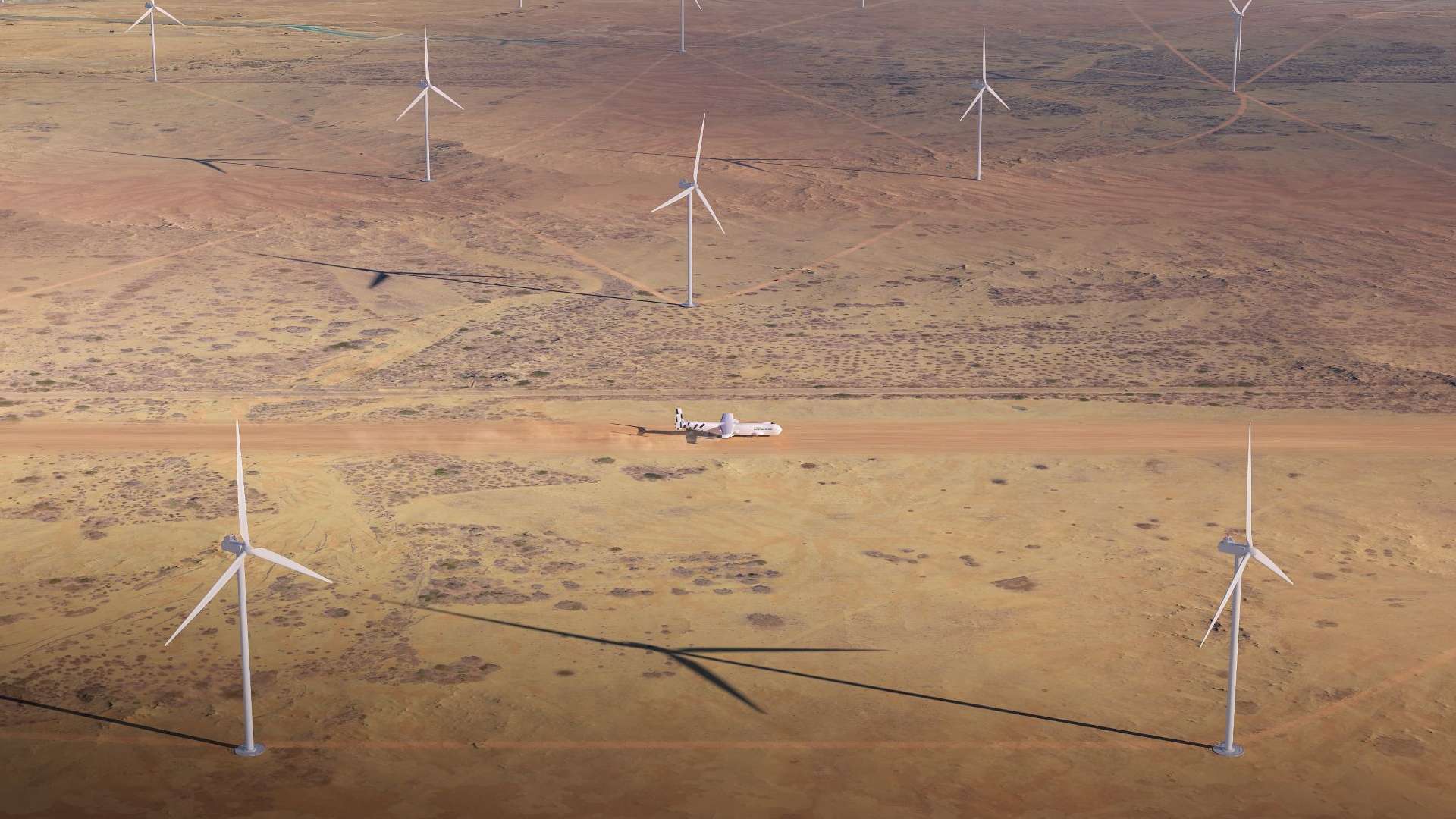
Radia WindRunner – Will It Happen?
There have been other suggestions about ways to move enormous turbine blades to remote locations. A company called Flying Whales is working on the design of an airship that could carry up to 60 tons of cargo. The WindRunner can carry a bit more than that, at 72.6 tons (160,000 lbs).
This means that this aircraft won’t be able to carry nearly as much weight as a 747-8F or other very large freighters. But it doesn’t need to. Its capacity is adequate, for the weight of its intended cargo.
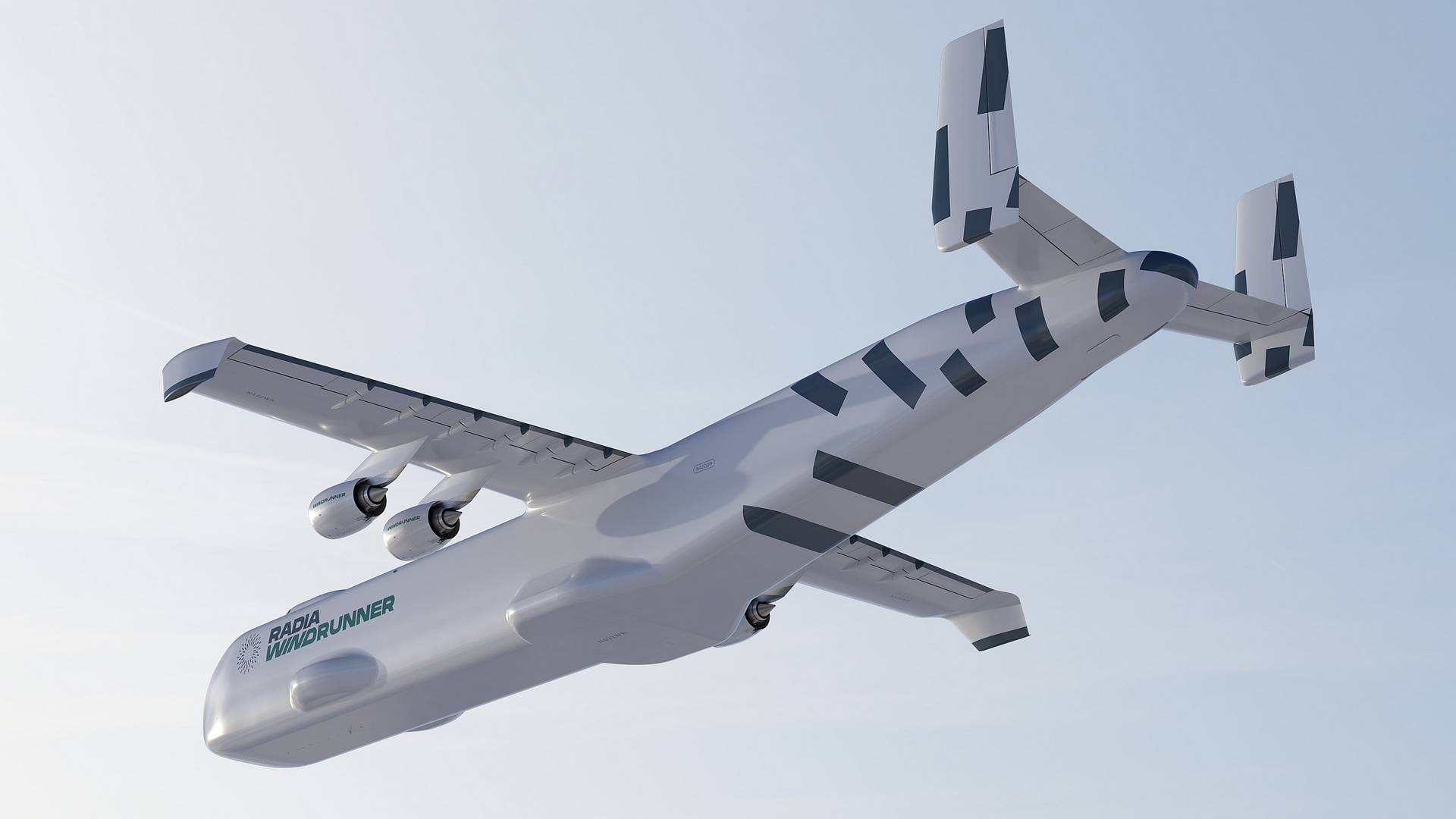
But will it actually happen? Radia has been working on the WindRunner for several years already and has raised $108 million toward that goal, while analysts value the company at $1 billion. Radia includes several engineers with previous experience in the aerospace industry, and its design can use existing engines and other parts, already in service.
The company also intends to team up with an existing aircraft manufacturer, in order to build its aircraft. Who could that be, and what engines will the plane have? Well, we will have to wait for that. But Radia’s workforce includes people with engineering and manufacturing experience with companies like Boeing and Embraer.



